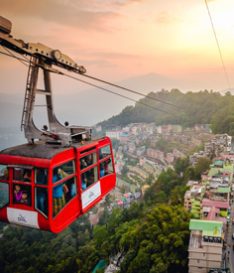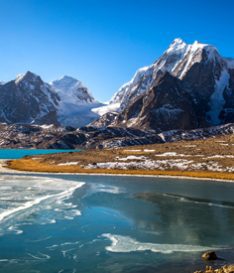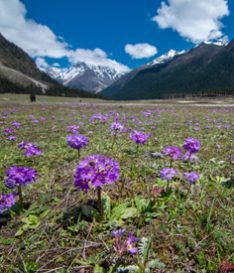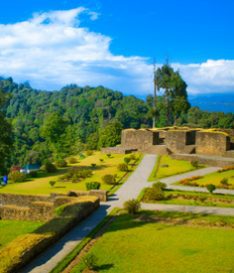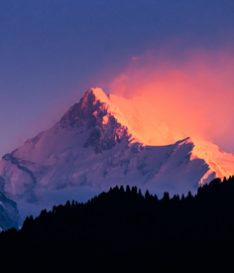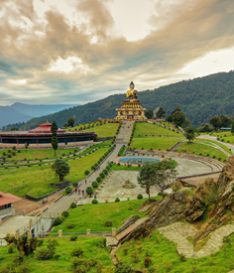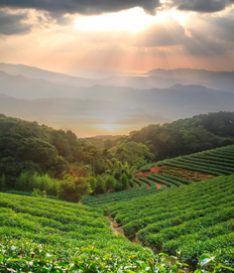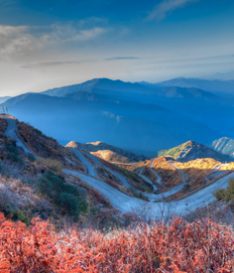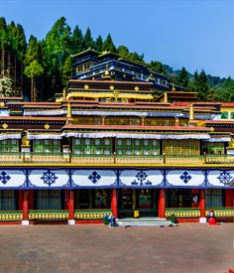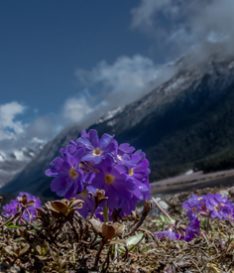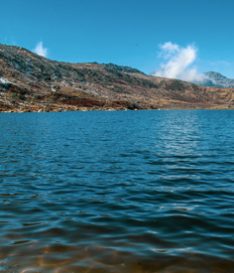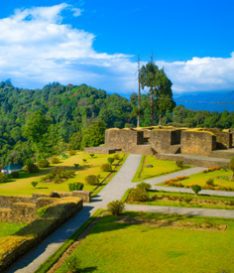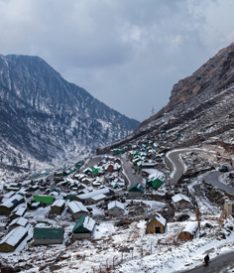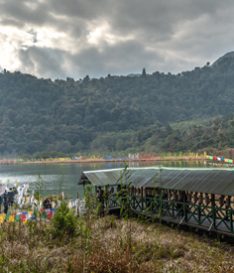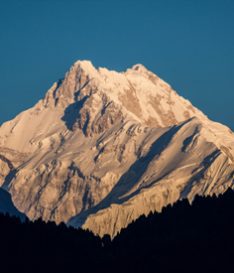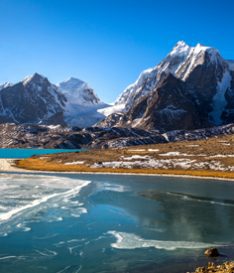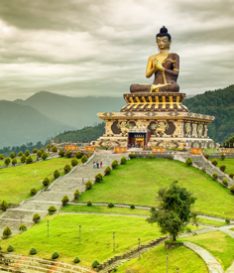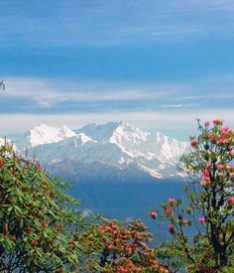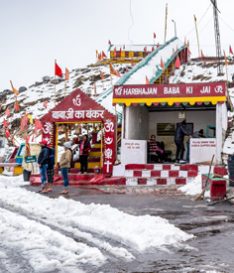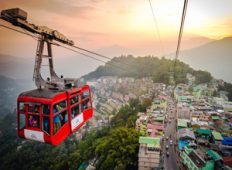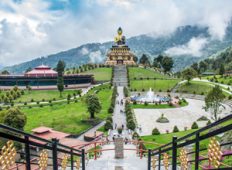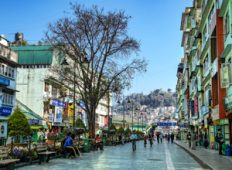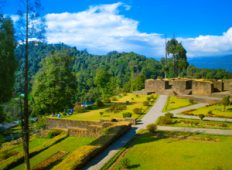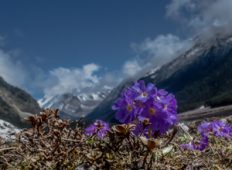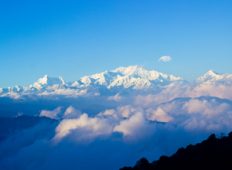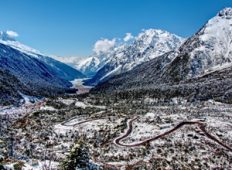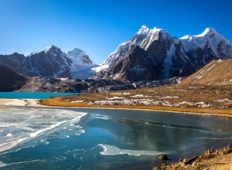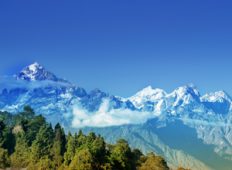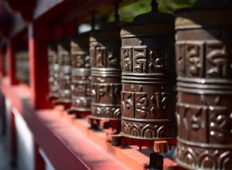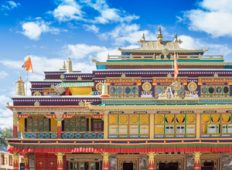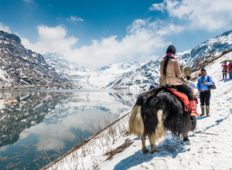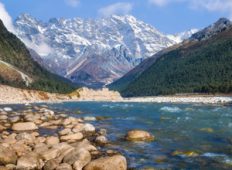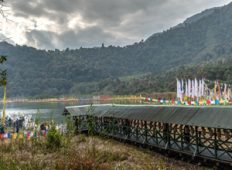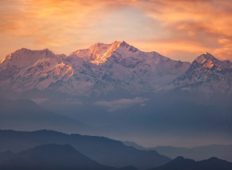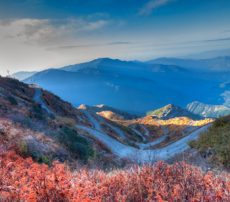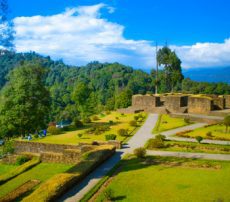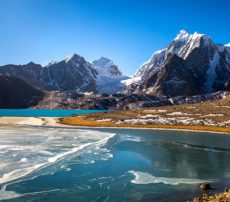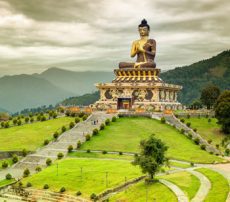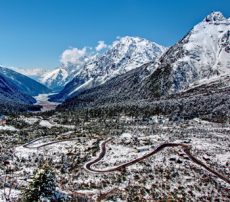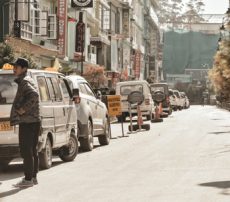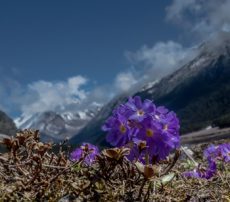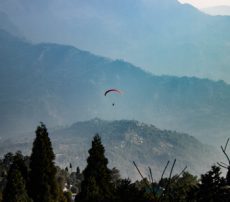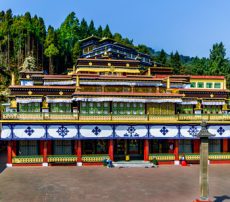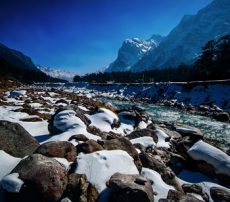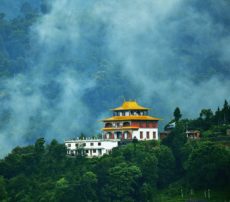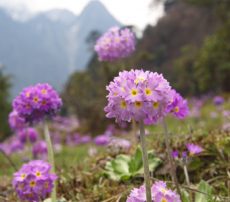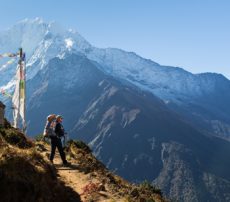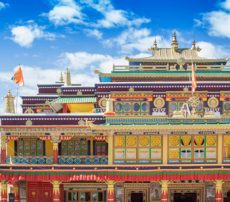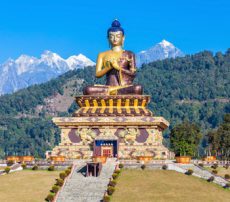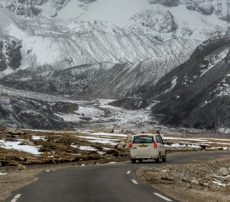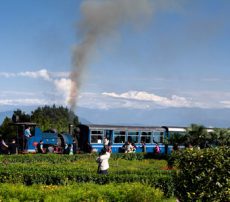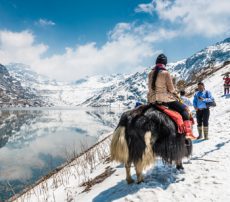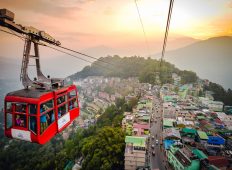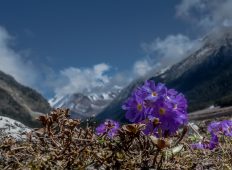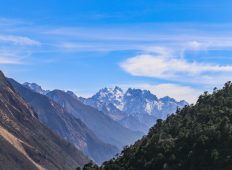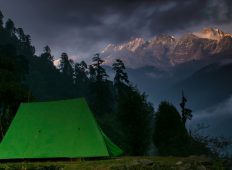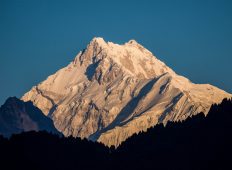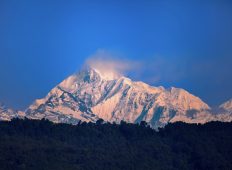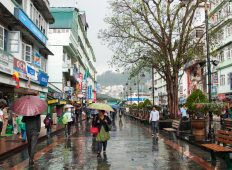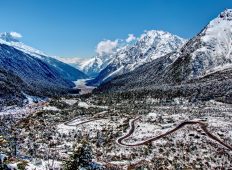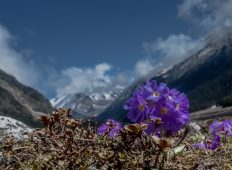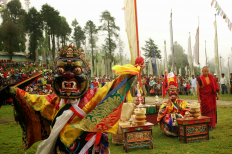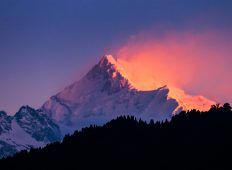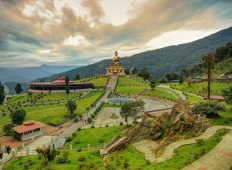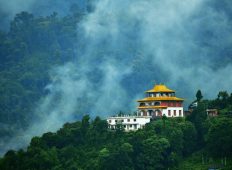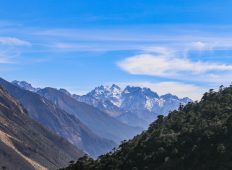GANGTOK TRAVEL GUIDE
Sikkim is the smallest Northeastern state of India, flanked by Bhutan, Nepal, Tibet and West Bengal on its four sides. Home to the Himalayan mountain range, Mt Kangchenjunga, the highest mountain peak of India, is located in Sikkim. Gangtok is the capital city of Sikkim.
Sikkim became a part of India as late as 1975. An independent monarchy before, little is known about its history, apart from it being a base for Tibetans, and the British building the hamlet of Gangtok as their military base when forging into Tibet during the 19th century.
The impact of this is still vibrant today in the culture, look and feel of the city. It is dotted with Tibetan monasteries and Tibetan culture. Resembling the Bhutanese capital, Thimpu, in its structure, it is a small hill city, a perfect place to unwind and connect with nature. A popular base for treks, Gangtok attracts trekkers from all over India and abroad. Unlike big cities, Gangtok has none of the noise, pollution and bustle, nor a skyline of tall buildings, but is equipped with plentiful amenities to give its visitors are wholesome experience of life in the mountains.
Sikkim is one of the few states that has preserved its natural milieu. Plastics are banned in Sikkim, as is tobacco. For the last fifteen years, Sikkim has been the only state in India which supports organic farming and has banned the import of non-organic food items from other parts of the country.
Nepali is the local language, and spoken popularly. Due to its similarity to Hindi, most people understand Hindi as well. English is the state language. The city is a very tourist friendly locale from the standpoint of communication. Tibetan, Bhutia, Sikkimese are some of the other local languages.
CLIMATE AND BEST TIME TO VISIT
Gangtok enjoys a subtropical, highland climate, which is moderate all the year round. Winter temperatures from 4-7deg C, without snowfall. Spring and summer are the best time to visit (March-June), as you get clear views of the mountain ranges. Rain showers are common in the summer season, and nights can get chilly. Autumn is also pleasant, though a little colder.
The climate of Gangtok is perfect for outdoor activities and hiking. Moving around on foot is also common. The city is well suited for exploration and making day trips to other sights in Sikkim. Gangtok serves as a great base for touring around Sikkim.
GETTING THERE
Gangtok is connected to the rest of India by air, train and road. There is no airport in Sikkim, but its proximity to the closest airport makes the commute possible.
SIKKIM BY AIR
Sikkim is set to get its own airport – the Pakyong Airport, 30 km from Gangtok – in June, 2018, as announced by the Civil Aviation Minister Suresh Prabhu. This will improve the connectivity of Sikkim to the rest of India, giving a big boost to tourism in the state. Sikkim is the only state in India that does not yet have its own airport. The inauguration of the Pakyong Airport will be a big step forward to connect Sikkim with the rest of India.
Currently, Bagdogra Airport (IXB) is the closest airport to Gangtok, and connects Sikkim by air. Located approximately 123 km from Gangtok, taxies ply from the Bagdogra airport to Gangtok. Bagdogra airport is connected to all the major cities of India like Guwahati, Delhi, Mumbai, Kolkata, Chennai. It is also connected to international cities like Thimpu, and Bangkok via Dhruk Air and Paro international carriers respectively.
Other international cities are connected to Bagdogra via the metropolitan cities. Helicopters also fly from the airport to Gangtok, but are subject to baggage limitations of 10kg per carrier.
SIKKIM BY TRAIN
The nearest train station is New Jalpaiguri, in Siliguri. It connects with Guwahati and the rest of the major cities like New Delhi, Kolkata, Mumbai, Bengaluru, Trivandrum, Ahmedabad, Jammu, Secunderabad, Ranchi, Kanyakumari, Jodhpur, Jodhpur, Puri, Bhubaneswar,Amritsar, Chandigarh, Pune and many more.
Taxis ply from New Jalpaiguri station to Gangtok.
SIKKIM BY ROAD
Gangtok is connected by road to Siliguri, Darjeeling and Kalimpong. State and private bus services connect the cities. To reach Gangtok by bus, travellers can board a bus from one of these cities. Taxies are an alternative to buses, the cost for which varies based on the vehicle type.
GETTING AROUND
Shared taxis can be hired from designated stands every 1km. Taxis run on most popular routes. Private taxis can also be hired on a fixed price basis. The central taxi stand is in Lal Bazaar.
The Ropeway is an intriguing feature of Gangtok, which not only makes way for easy commute in a mountainous landscape, but also gives splendid views of the terrain. It links Deorali Bazar with Namnang.
SIGHTSEEING & ACTIVITIES
Gangtok has a little of everything – culture, nature, entertainment and food. Explore Tibetan monasteries to delve into the rich Tibetan culture which permeates festivals, music, food, architecture and the lives of the local people. A walk around the monasteries gives a peep into a different lifestyle. Young monks clad in red robes, learning subjects of the mind and soul, learning arts and sciences along with meditation, are a reminder of a way of a life lives without hassle. On the other hand, beats of Nepali, Hindi and English rock in the alleys and eateries bear testimony to the North east as the cradle for the country’s rock music culture. For those who love Tibetan food, Gangtok is a delight. Momos, Noodles, Thukpa and other local dishes are readily available all over the city and will leave little room for complaint. Nepalis by nature are food lovers, and they ensure that the travellers receive a grand gastronomical experience.
Apart from sightseeing in Gangtok, travellers also take day trips around Gangtok or travel to other parts of Sikkim.
For sightseeing in Gangtok, the following sights are popular:
NAMGYAL INSTITUTE OF TIBETOLOGY
It is a research institute and museum dedicated to the study and exploration of the Tibetan arts and culture. The museum displays Tibetan artifacts like scrolls of manuscripts, cloth paintings, other objects for rituals etc. This is a must visit for a history and culture junkie.
DO-DRUL CHORTEN
This is a Buddhist stupa, which are traditionally places of worship of sacred objects, and symbolize peace. Giant Buddhist prayer wheels circle the stupa. The prayer wheels are inscribed with mantras, and spinning the wheels is believed to spread the peaceful vibrations of the mantra in the surroundings. Young monks can be seen to pursue their studies in and around the stupa.
RUMTEK MONASTERY
The Rumtek Monastery is the abode of the third highest Buddhist Monk in the Tibetan Buddhist sect, Karmapa Lama. The design of the monastery and stupa complex is based on the design of Kagyu headquarters in Tibet. Located away from the city, it is perfect for some quiet reflection and meditation. The natural ambiance makes the complex scenic, and soothing on the eyes.
ENCHEY MONASTERY
This is a small monastery tucked away from the main city, at a distance of 3km from Gangtok. Legend has it that it was built in honor of Druptob Karpo who had the ability to fly and flew to the location from the Maenam Hill. The pagoda structure of the monastery was built in line with the Chinese architectural style in the 19th century. The monastery is known for its wall paintings, apart from being a calm site in the midst of tall pine trees. The deities worshiped in the monastery are Lord Buddha, Lord Padmasambhava, & Loki Sharia.
HANUMAN TOK
Just outside of Gangtok, Hanuman Tok is at the top of a hill, giving splendid views of the Kangchenjunga. Reachable via a stairway, the hilltop has a temple dedicated to Lord Hanuman. As per the legend, Lord Hanuman halted at this peak when he was carrying the Sanjeevani booti to Lanka.
LAKE TSOMGO
At an altitude of 3779m, Lake Tsomgo is a lake surrounded by mountain ranges. The crisp air, brilliant blue water and tranquillity of the place make for a deeply rejuvenating experience. Spring sees the lake blooming with flowers whereas the lake remains frozen in the winter.
NATHU LA PASS
This is a pass located at an altitude of 4309m. From here you can see the fenced Indo-China border. Soldiers on both sides of the international border guard the area, patrolling in all kinds of weather. The viewpoint is reached through a staircase after the taxis drop you off. Grand views of the Himalayan mountain range offer photography enthusiasts and trekkers alike, a refreshing break.
BANJHAKARI FALLS AND PARK
This is a park built around a waterfall, with ridges and bridges all around the main waterfall which plunges from a height of 40ft. Nice for a quick stop or a refreshing shower in the waterfall, this is a popular spot for children.
Many more sights in and around Gangtok make for a travel venture of for every kind of traveller.
TASHI VIEW POINT
The perfect spot to savour a beautiful sunrise and feast your eyes on the Kangchenjunga mountain. Offering breathtaking views of the mountain range, the color of the sky and the mountains as the sun rises in the sky. Binoculars are recommended. To get a full view of the rising sun, it is best to reach a little before dawn, generally around 5am, but varying as per the season.
Gangtok provides an enriching experience to every kind of traveller, with its multitude of options for sightseeing and activities in and around. It is the ideal destination to beat the heat of the summer or escape from the din of the bustling city life.
Get Instant Call Back
Why Choose us ?
What makes us diffrent from other tour package companies

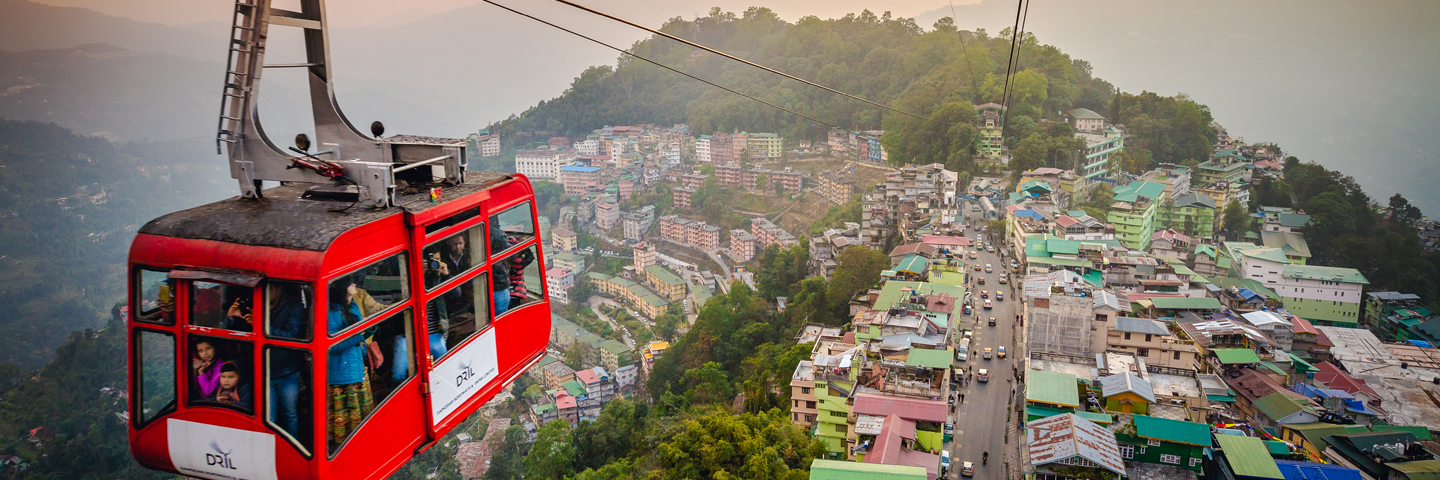
 Best time to visit Gangtok
Best time to visit Gangtok How to reach Gangtok
How to reach Gangtok



